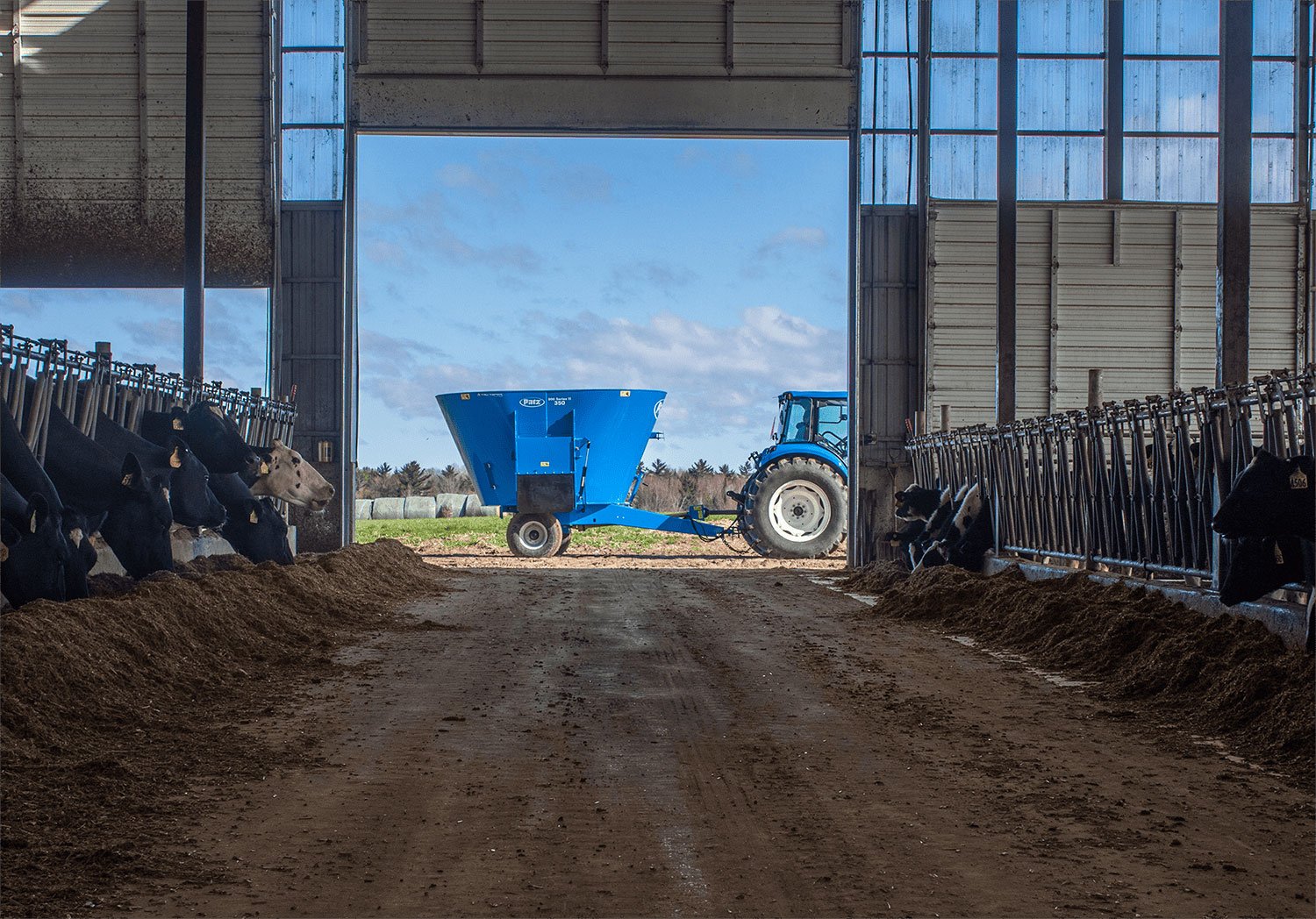
Loading your Mixer to Maximize Feed and Efficiency
Does it really matter when feed gets added to the mixer…as long as it gets added?
The answer is yes, it does matter. Just like baking bread, the sequence the ingredients get added, the length the ingredients get processed, and the equipment used have a direct impact on the final product.
Feed is 65% of operating costs. 65%! Does that number grab your attention? It should. Maximizing your feed and mixing it efficiently can directly impact your bottom line. If your ration mix is overlooked, it can affect your feed cost and herd health due to higher refusals and missing nutrients. Effects of improper diet and processing can trickle down and have negative effects in other areas of your operation: higher fuel costs, lower milk productivity, and lower milk quality. To maximize your feed and maintain a healthy herd, focus your attention on ingredients, mixing procedure and processing.
Patz recommends working with a nutritionist or specialist to formulate a diet specifically for your herd, farm conditions and equipment.
The Loading Procedure.
Before we jump into the loading sequence, let’s talk about loading position. To maximize your feed, be sure to:
- Park on LEVEL ground. Both the mixer and tractor should be parked on level ground when loading. A slight incline or decline can skew the distribution of ingredients. Being level prevents feed from pooling in the lowest part of the mixer. It also allows feed to easily move through the tub to get cut and produce a consistent mix.

- Load feed in CENTER of tub. Regardless of the mixer size and number of augers, feed should always be loaded in center of tub. This will allow the mixer to efficiently do its job of creating a TMR mix.

- Do NOT overload the mixer. Patz recommends having at least 4” between feed and top of the mixer. When the mixer is properly filled, it’s easier to mix the rations and uses less tractor power. Feed waste is also minimized – feed stays within the tub.
The Loading Sequence.
The order that feed gets added to a mixer matters so that you can create the best feed mix for your herd. A good rule of thumb is to add ingredients from long to short and from dry to wet. To optimize your feed, this is the recommended sequence for adding ingredients:
- Dry ingredients (long stem dry alfalfa hay, chopped dry hay/straw, grains, seeds, etc.)
Adding bulky and light feed first to partially process. You also want to make sure that the long particle feed has sufficient time to be reduced in length to a more palatable size. Round or square feed bales need more cutting time. - High Moisture ingredients (silage, haylage, brewer’s grain, high moisture corn)
- Liquid Ingredients with spray bar (molasses, fats, water)



Tips:
- Optimal average moisture is 50%. Feed that is too dry or too wet, can be harder to digest.
- Take ventilation drying effect on TMR into consideration. The movement within the mixer naturally creates airflow. While minor, this airflow does have a minor drying effect. It could be compared to an Ultra-low Heat or Tumble Dry setting on a clothes dryer.
- Do not over process the feed mixture. Breaking ingredients down too far can have negative impact on the mix. Remember, mixing continues while travelling between buildings and through feeding.
The efficiency of a TMR Mixer can reduce your operating costs and increase your income:
- The efficiency of the TMR mixer reduces the mixing time. Less mixing saves on fuel costs and labor costs.
- Patz mixers produces a consistent, well-blended feed ration. Having a palatable, well-mixed feed minimizes refusals and waste. When feed is 65% of operating costs, less refusals and waste will have a noticeable impact on the bottom line.
- When the herd is well fed and getting prescribed nutrients, the quality of milk and productivity is likely to increase. Better quality milk and increased productivity can have an impact on your income.
Be mindful of how you load your mixer – both the position of it when loading and how the ingredients are added. Following good practices and being consistent can benefit your herd’s health and allow you to feed the potential.





